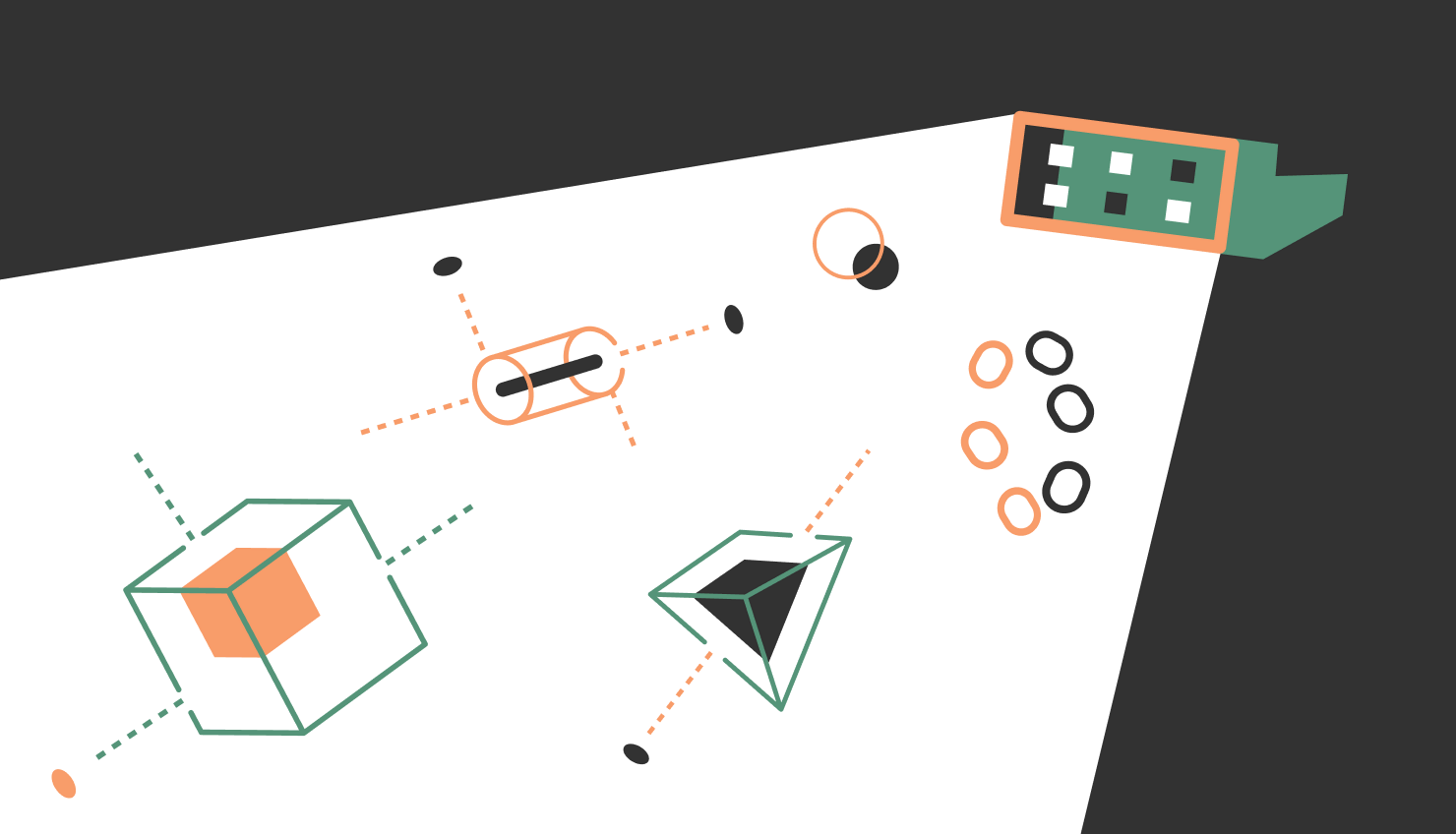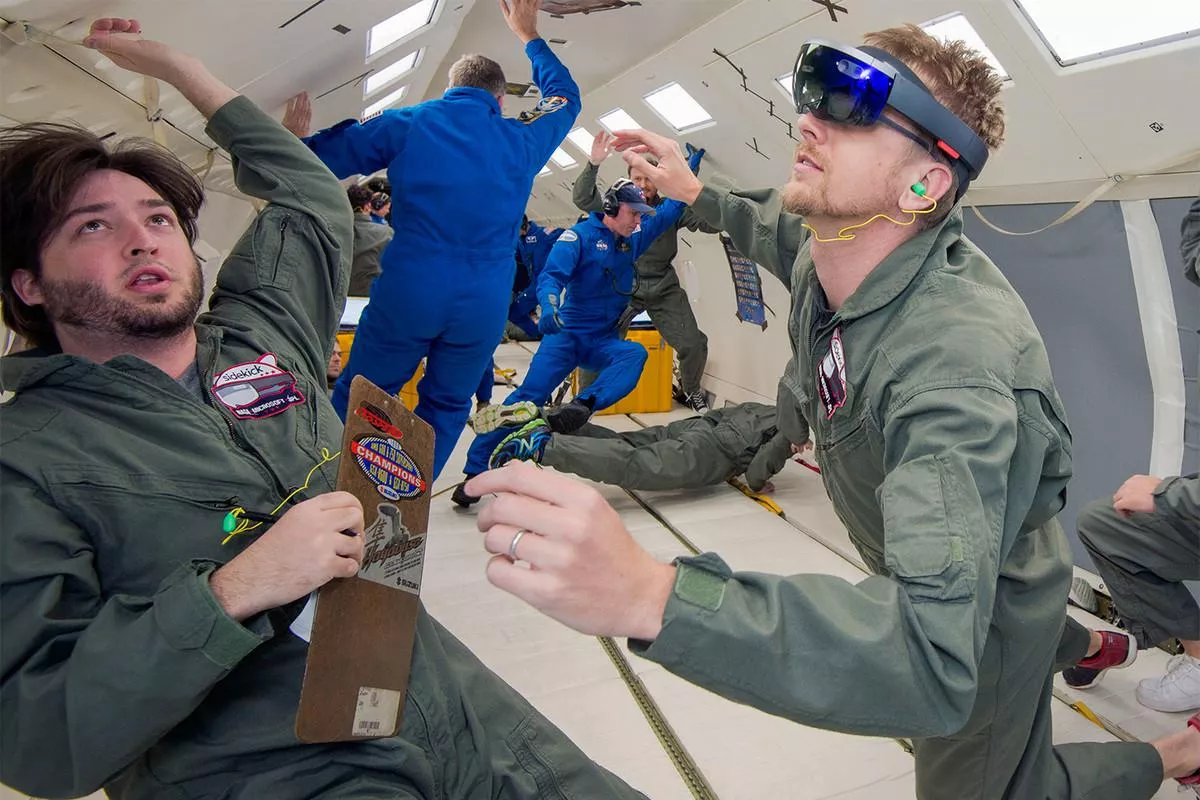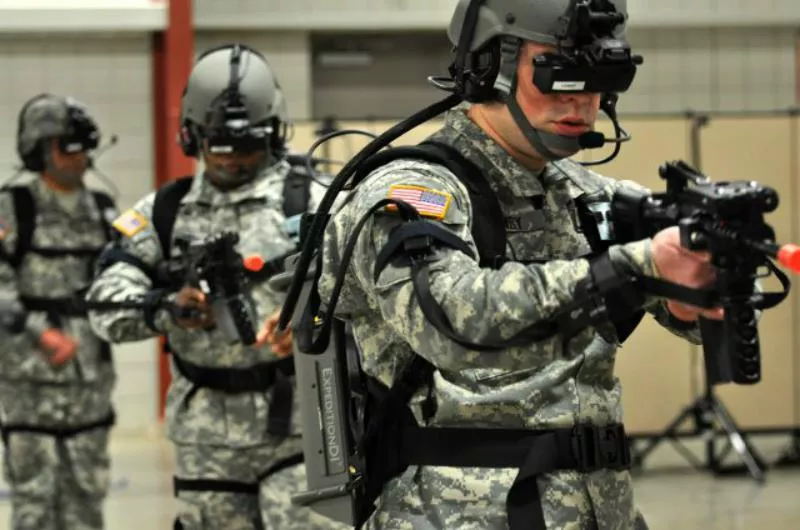While still more of a gimmick than an omnipresent device, the virtual reality or VR set is sure to become more widely used in eLearning throughout the next decade. Today, we will discuss the pros and cons of using virtual reality in eLearning.
One of the main challenges of online education is keeping the learner engaged, as both the attention spans and efficient effort concentration time keep decreasing. The learners nowadays should be engaged within the first 8 seconds of the session or they lose focus and can concentrate on the task for 15 minutes max before they are distracted. This is why various instructional design techniques for learner engagement are widespread.
However, despite making the emphasis on video, infographics, tests and quizzes, gamification, social network integration, learning management systems nowadays can provide so much immersion only. The learner is still in front of the screen and cannot interact with the instructor amidst the video.
VR offers a whole other level of immersion, where the learner can interact with items and characters in the virtual surroundings and gets a much more engaging experience in comparison with online courses or brick-and-mortar education.
Here are just some examples of virtual reality in education, entertainment, and training:
- Google offers their VR headsets to schools for free along with educational field trips.
- Microsoft immerses the players into Minecraft metaverse using Rift virtual reality. This also helps the children express their creativity through building and exploring in the virtual world.
- Conquer Mobile tests surgical training simulations to help medics.
- The largest bank of Australia allows applicants explore their potential working environment through VR.
- CITEC lets you have our own VR gym. Personal trainer included.
- NASA uses VR for preparing astronauts for upcoming missions.
Photo credit: NASA
- Toyota teaches the teens to drive with their TeenDrive365 campaign to deliver immersive driving experiences without endangering the drivers, vehicles and pedestrians.
- The US Military uses VR to train soldiers, which also helps minimize training expenses.
Photo credit: US military
- Siemens and other companies from oil and gas, chemical, metallurgy and other high-risk industries also benefit from providing such employee training simulations. When the outcomes of the decisions can be simulated in virtual reality, the mistakes will not lead to damage and casualties, greatly increasing the efficiency of the training.
Thus said, VR will undoubtedly find even more ways into the eLearning industry, yet it has both pros and cons and we will list them below.
Why using virtual reality in eLearning can be beneficial?
- Immersion into the learning. VR set blocks distractions like social networks, phones, TV ads and other informational noise, allowing the learners to concentrate on the learning. Submersion into an interesting 3D simulation with lots of potent stimuli leads to naturally improving the brain’s ability to process new information, granting an unprecedented level of knowledge comprehension.
- Personalized learning environments. Designers can create any environment to provide comfort for the learners. Every learner can choose the surrounding that fits them best — a forest, a seashore, a sunny lawn, and starry skies at night. This will help the learners forget they sit in a classroom and relax to comprehend new knowledge better.
- Training both knowledge and physical skills. Serious gaming and simulations can reach quite another level, where a worker must execute the correct sequence of movements (open the toolbox, take the right tool, shut down the valve, cut the needed wire, pull the correct switch, etc.) Such exercises will create muscle memory, helping the employees be prepared to dangerous situations without incurring great expenses on the company and cutting down the risk in a dangerous simulation.
Even though virtual reality is in its infancy nowadays, it already has much to offer in terms of eLearning. As time will pass, more and more applications will reveal themselves.
Factors slowing down the implementation of VR in Online Learning
- Financial restraints. VR set nowadays is a sizeable investment, limiting its usage to a narrow circle of tech geeks and early adopters, treating it more as a toy than a tool for education. Smartphones were also not too widespread 10 years ago and now almost 80% of the US or EU population have them. We are sure that with time VR sets will also become more affordable and turn into ubiquitous parts of our lives.
- Hardware requirements. As of now, VR set requires quite an expensive computer to process the immersive simulations. Add the high-speed unlimited Internet connection (for delivering eLearning) into the equation and you end up with significant hardware requirements. As hardware development will progress, computing power level needed for delivering immersive learning simulations will become lower, leading to wider adoption of VR in eLearning.
- Physical limitations. When people see VR goggles, they rarely think of all the accessories like manipulators that actually form the VR set needed to provide full immersion into virtual reality. This system limits the freedom to move as it needs to be stationary. mLearning is on the rise because people want to learn whenever and wherever they want, a feature VR cannot yet provide. Once VR sets become more compact and ergonomic, their adoption potential should grow exponentially.
- Physiological issues. Unfortunately, nausea is quite probable when using a VR set due to the issues with screen latency. The manufacturers are doing their best to overcome the challenge, and it is only a question of time. However, the issue still persists and limits the use of virtual reality in eLearning greatly. Such distractions are not helping in learning.
Top 10 Examples of Virtual Reality in Education
Virtual reality (VR) technology has seen remarkable advancements in recent years, unlocking transformative applications across diverse industries. In this article, we will explore some of the most compelling uses of VR by pioneering platforms and organizations, such as Discovery VR, Labster, VirtualSpeech, Google Earth VR, InMind 2, Sketchbox, Boulevard, and SkyView. These examples showcase how VR is revolutionizing education, healthcare, corporate training, and creative fields with immersive and innovative solutions.
1. VR Field Trips by Discovery. Virtual field trips using platforms like Discovery VR in education and Google Expeditions give students a realistic way to explore global landmarks, natural wonders, and historical sites without leaving the classroom. These experiences create engaging learning opportunities, making subjects like history and geography come alive through 3D and 360-degree video content. With over 1,000 destinations available for virtual reality learning, students can “travel” to locations such as the Eiffel Tower, the Amazon Rainforest, or Ancient Egypt. This example of virtual reality in education helps in broadening their cultural horizons, contextual understanding, and increasing knowledge retention by up to 75%.
| Features | Industry | Additional Info |
| 3D immersive experiences | Education | Supports virtual travel and cultural exploration. |
| Compatible with various platforms | Travel/Tourism | Makes distant learning experiences accessible. |
| 360-degree video | Media/Entertainment | Enhances cultural awareness and student engagement. |
2. Medical and Nursing Training. VR simulations for medical training, offered by platforms like Labster and UbiSim, replicate real-life medical situations, including patient interactions, surgical procedures, and anatomy exploration. This approach allows students to practice high-risk tasks in a safe and controlled environment, leading to 63% higher knowledge retention rates and reducing training costs by up to 50%. Virtual scenarios such as emergency response and diagnostic evaluations provide hands-on examples of virtual reality in education that are otherwise hard to achieve in traditional training.
| Features | Industry | Additional Info |
| Realistic medical simulations | Healthcare | Used for procedures and anatomy exploration. |
| VR anatomy exploration | Medical Education | Helps reduce reliance on physical resources. |
| Risk-free practice environments | Education | Ideal for high-stakes or complex medical scenarios. |
3. STEM and Virtual Labs. Platforms like Labster provide interactive VR labs where students conduct virtual experiments across disciplines like chemistry, physics, and engineering. These labs offer features such as molecular visualization and real-time data analysis, allowing students to conduct tasks like gene editing or chemical synthesis that would be impossible in a regular classroom. The gamified approach makes VR in eLearning more engaging, helping to improve STEM test scores by 76% and democratizing access to high-quality scientific education for all students.
| Features | Industry | Additional Info |
| Simulated lab experiments | Education | Includes 200+ STEM-focused labs. |
| Gamified learning approach | Tech/EdTech | Promotes interactive and cost-effective STEM learning. |
| Accessible experiments | Research | Makes lab experiences available to more students. |
4. Art Education. Boulevard and Tilt Brush elevate art education through VR, enabling students to explore iconic museums like the Louvre and design sculptures in immersive 3D spaces. These platforms combine interactive storytelling with creative tools, increasing student engagement by 40%. By blending traditional art history with modern technologies, like VR, in education, learners can analyze masterpieces closely while experimenting with dynamic artistic techniques.
| Features | Industry | Additional Info |
| Museum exploration in VR | Art and Culture | Access world-renowned artworks in 3D. |
| 3D painting and drawing tools | Creative Industries | Fosters creativity beyond traditional art lessons. |
| Interactive art history lessons | Education | Increases student engagement through immersive experiences. |
5. Historical Simulations. By using VR simulations such as the 1943 Berlin Blitz, students gain an immersive understanding of historical events. The combination of authentic footage, sound effects, and narration allows learners to experience history from a first-person perspective, resulting in a 50% higher retention rate for details about historical events compared to conventional learning methods. These experiences help students build a stronger emotional and cognitive connection to the past.
| Features | Industry | Additional Info |
| Authentic footage and audio | History | Recreates significant historical events in detail. |
| Immersive storytelling | Media/Entertainment | Enhances emotional connection to the past. |
| Educational simulations | Education | Helps improve understanding of historical contexts. |
6. Soft Skills Development with VirtualSpeech. VirtualSpeech uses VR to simulate real-life scenarios such as public speaking or customer service interactions, providing realistic practice environments for developing communication skills. Learners report a 275% increase in confidence after using VR for soft skills training, as the simulations help them practice in diverse situations without the pressure of live audiences. This approach is especially valuable for HR training and professional development.
| Features | Industry | Additional Info |
| Real-life scenario simulations | HR/Training | Used for developing communication and social skills. |
| Improves interpersonal abilities | Corporate Training | Provides safe environments for skill refinement. |
| Flexible training modules | Education | Suitable for personalized skill development. |
7. Exploring the Human Brain with InMind 2. It offers an interactive, gamified approach to learning about neuroscience. Students navigate through a virtual brain to understand the functions of neurotransmitters and neural pathways. The game’s educational storytelling format makes complex scientific concepts more accessible, boosting retention by 30% compared to traditional science lessons. It’s particularly beneficial for engaging younger students who may find conventional biology courses challenging.
| Features | Industry | Additional Info |
| Gamified neuroscience education | Health/Science | Uses storytelling for engaging lessons. |
| Interactive brain exploration | Gaming | Teaches complex concepts in an accessible format. |
| Engaging learning experience | Education | Suits both younger audiences and advanced students. |
8. Expeditionary Learning with Google Earth VR. Google Earth VR enables students to “travel” across iconic landmarks like Mount Everest and the Great Wall, bringing geography lessons to life. Geospatial analytics and 3D mapping foster a vivid understanding of global contexts, raising test scores by 70%. Beyond geography, the platform supports environmental and historical education, bridging disciplines with interactive exploration.
| Features | Industry | Additional Info |
| 3D geographical exploration | Travel/Tourism | Makes geography and history more interactive. |
| Virtual visits to landmarks | Education | Enables experiential learning of global cultures. |
| Interactive mapping technology | Media/Entertainment | Enhances spatial understanding and curiosity. |
9. Prototyping and Design with Sketchbox. Sketchbox allows students in fields such as engineering and architecture to design, visualize, and prototype in 3D. The ability to create and manipulate models within a virtual space accelerates the design process by 50%. This VR tool is particularly useful for conducting remote design reviews and real-time collaboration, making it a valuable resource in technical education and design industries.
| Features | Industry | Additional Info |
| 3D modeling and prototyping | Engineering | Useful for architecture and industrial design. |
| Virtual collaboration | Tech/EdTech | Enables team-based design reviews. |
| Enhances spatial understanding | Education | Supports interactive learning in technical fields. |
10. SkyView for Astronomy. The SkyView app leverages augmented reality to help students learn about stars, planets, and constellations by pointing their devices at the night sky. This interactive experience makes astronomy lessons more engaging, improving students’ understanding of celestial bodies by 45%. SkyView helps bring space science to life, encouraging interest in STEM fields among younger learners.
| Features | Industry | Additional Info |
| AR sky maps | Science | Helps students learn about celestial objects. |
| Real-time celestial tracking | Tech/EdTech | Makes space exploration accessible and exciting. |
| Interactive astronomy learning | Education | Engages students in hands-on scientific exploration. |
The Bottom Line
As you can see, the use of VR in eLearning promises some great results and faces some dire challenges. However, the most important question is this: will you be ready to implement VR into your eLearning practices once its issues are dealt with? Sharp-minded entrepreneurs should have ready methodologies in place to reap the benefits once the technology is ready for mass adoption.
What is your opinion on how to use VR in the eLearning field? Have you experienced VR firsthand? Can you think of some new VR applications for online education? Share your thoughts; we are always glad to hear from you.






